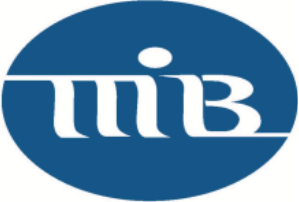There’s the ancient story of an agitated boss exclaiming to an employee, “You missed work yesterday, didn’t you?” Tersely, the employee replied, “No, not particularly.”
Similarly, your balance sheet, and specifically your cash, needs to get to work. The persistence of excess liquidity in the financial system remains an understatement. The recently released FDIC Quarterly Banking Profile for the Second Quarter of 2021 described a challenging environment for federally insured banks. These select items are telling:
Q2 2021 vs. Q2 2020:
- 10.4% increase in deposits
- 0.8% decrease in net loans
- Net Interest Margin on Average Assets: 2.50% vs. 2.81%
- Cash and Equivalent Balances: +25.0%
- Loan-to-Deposit Ratio: 56.9% vs. 63.4%
So, what should you do in this environment of margin pressure and excess liquidity? Put the cash to work and get it out the door. That may seem easier said than done with the federally insured bank composite loan-to-deposit ratio now standing at 56.9%, the lowest level on record. It’s a no-brainer that there’s an urgency to expeditiously deploy excess cash into safe and profitable loans and investments.
Community banks, particularly those that are asset-sensitive, have been executing a variety of growth strategies of late, including: i) increasing their portfolio of fixed-rate mortgages; ii) developing innovative product line extensions; iii) pre-funding pending investment maturities; and iv) extending asset durations and funding short. What do we see the neutral or liability-sensitive credit unions doing? Many are “blending-and-extending” their existing borrowings, including Federal Home Loan Bank advances.
- When funding mortgages, consider using a mix of duration-certain borrowings along with shares and deposits. A blended funding structure can mitigate interest and extension risk. Symmetrical and forward-start borrowing structures should also be modeled. Blended funding can be used to attain spreads in excess of 200 basis points alongside embedded interest rate risk protection, even in today’s market.
- Innovate! Market home office loans as a specific niche. Consider unique lending programs such as fully-amortizing 10-year mortgages that are designed for those that are soon-to-retire. As many borrowers desire a debt-free retirement, “forced” savings sure beat close-to-zero investment returns in the current rate environment.
- Build a commercial real estate portfolio using amortizing borrowing structures to fund customized multiple amortization loan terms.
- Now that the PPP program is winding down, build your C&I loan portfolio with blended and amortizing borrowing structures. In the current environment, dividend-adjusted blended funding rates are well below 1% inside of seven-year maturities.
It’s important to remain as close to fully invested as possible. Grow the balance sheet with prudent credit risk. Mitigate rate risk by funding intelligently and diversifying your funding sources. Your shares and deposits support uncertain durations. Blend them with funding sources, i.e., borrowings, that support duration certainty. Liquidity and interest rate conditions are always subject to change. If there was ever a time to preserve future earnings streams and counter unrelenting margin pressure, it’s now. Put that cash to work. You won’t miss it!
To discuss how these strategies could work with your institution, contact Eric Jensen, Vice President, Senior Relationship Manager, at ejensen@fhlbdm.com or 206.340.2489.
This article was authored by John Biestman, Vice President, Senior Relationship Manager in the Member Solutions Department, where he works with our regional bank members in the western region.










